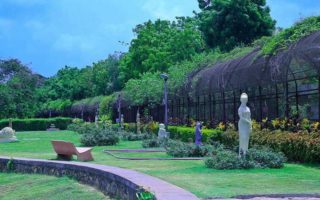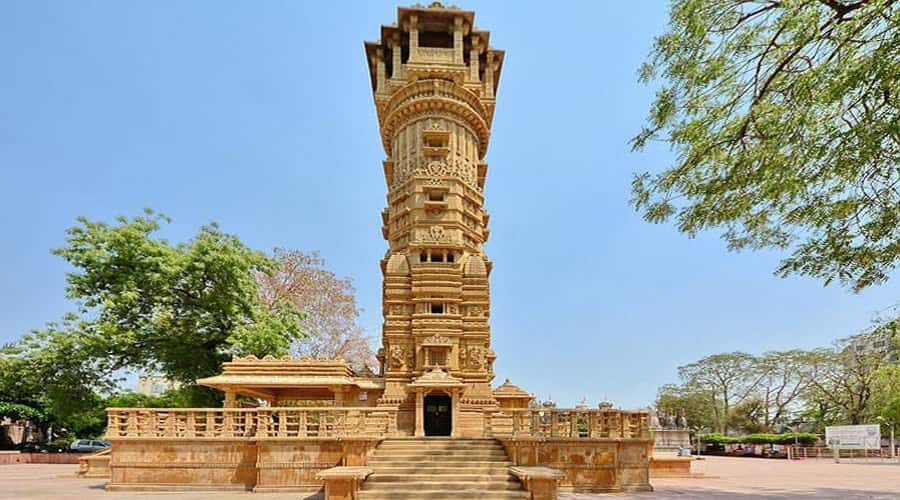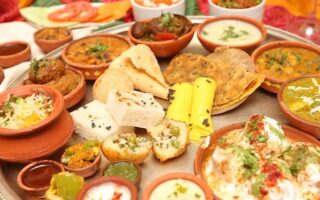Gujarat is a potpourri of art, craft, dance, and literature, and is famous for its unique culture. It’s interesting to learn about the different cultural aspects of Gujarat and understand their significance.

Origin, Ethnicity and Language of Gujaratis
The ethnic lineage of the Gujaratis is derived from the Gurjars, who arrived in India along with the Huns as they were traveling and crossing Punjab. Large groups of them settled in Gujarat, and many are of Indo-Aryan origin. About 20% of Gujaratis belong to tribal groups like the Naikda, Bhils, Kolis, and Macchi-Kharwa, who still live in Gujarat as they weren’t defeated by the Aryan invaders. In fact, the Bhil community soon became the rulers of Gujarat, while the Gurjars occupied middle-level positions. Gujarat has a multi-religious culture due to significant immigration during the medieval period, bringing Islam and Zoroastrianism. In the 14th century, the Kathis, or Sun Worshippers, held dominance in Saurashtra, and they were experts in horse breeding. Soon after, the Rabaris, who had a royal lineage, dominated Saurashtra, mainly as cattle breeders.
Today, most Gujaratis speak the Gujarati language. People of this ethnicity are concentrated in Gujarat, Madhya Pradesh, Maharashtra, and Rajasthan. However, sizable numbers also live in distant areas of the country, like Daman and Diu, Dadra and Nagar Haveli, etc. Incidentally, Gujarati communities like Bohra, Memom, and Khoja, who have settled in Karachi, still consider their ethnicity to be Gujarati. Marwari, Hindi, Marathi, and Urdu are also spoken in Gujarat, and in the Rann of Kutch, Kutchi is the primary language.
- Must Reads on: List of Scheduled Tribes in Gujarat
Gujarati Homes
Gujaratis are marked by their diversity in culture, traditions, and religion. The Gujarati culture has elements of Hinduism, Jainism, Islam, and Buddhism, and reflects many different forms of beliefs, arts, institutions, languages, technology, and values. One overriding custom of the Gujaratis is respect for elders and the tradition of passing on knowledge and values from generation to generation. Culturally, Gujaratis are friendly and adept at mingling in foreign cultures, which is why they have spread to different parts of the world.
Modern homes have been built in Gujarat, but many still show a fondness for wooden houses and traditional homes. Traditional Gujarati houses have intricate design elements and exquisite interiors, and every home has a Chabutra meant for feeding the birds. The kind of furniture used in homes is dependent upon the exact geographical location. Sankheda near Vadodara has lacquered furniture, which is now a landmark of southern Gujarat. Rajkot homes have Minakari furniture, while homes in Surat, Saurashtra, and Kutch have intricately carved furniture.
Music and Dance
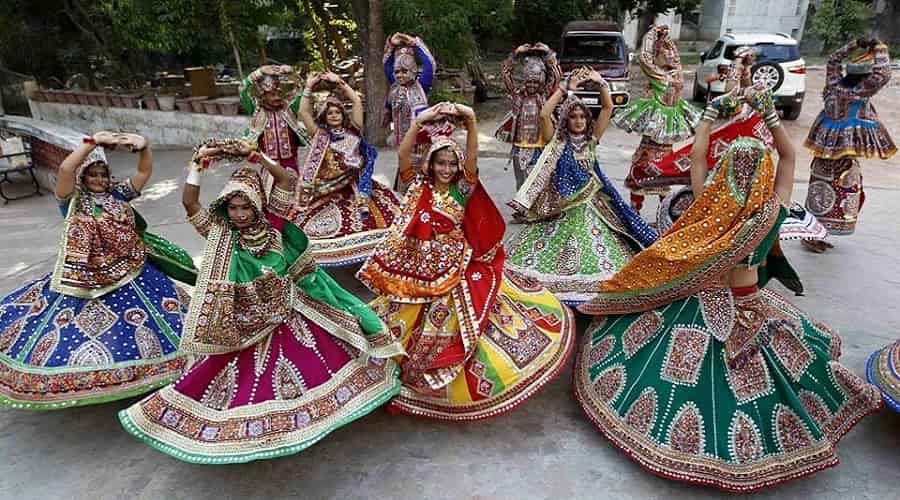
The traditional folk dance forms of Gujarat are Dandiya Raas, Garba, Garbi, Tippani, Padhar, and Dangi. While Dandiya Raas is a romantic, playful, and vibrant form of dance inspired by Krishna, the Garba is a lighter and more graceful dance performed by females in reverence to Goddess Amba. Garbi is a forceful dance characterized by forceful movements of the limbs, and it is essentially meant for raising morale before battle. The Padhar dance was performed by the rural community living around Nal Lake and is inspired by the undulations of the sea waves.
Literature
The history of Gujarat’s literature dates back to 1000 AD, and it has since flourished. Famous poets and novelists include Hemchandracharya, Mirabai, Shamal Bhatt, Premanand Bhatt, Govardhanram Tripathi, Suresh Joshi, Mahatma Gandhi, Pannalal Patel, Akho, Dalpatram, Kavi Kant, and Kalapi.
Gujarati theatre is inspired by Bhavai, and it has been taken forward to cinematic excellence by Sanjay Leela Bhansali and Ketan Mehta.
Cuisine
The different parts of Gujarat have different tastes, influenced by neighboring states. In South Gujarat, which shares borders with Maharashtra, Jowar is consumed, while in Saurashtra and North Gujarat, Bajra and Maize are common. In Baroda, a fusion of all tastes is found.
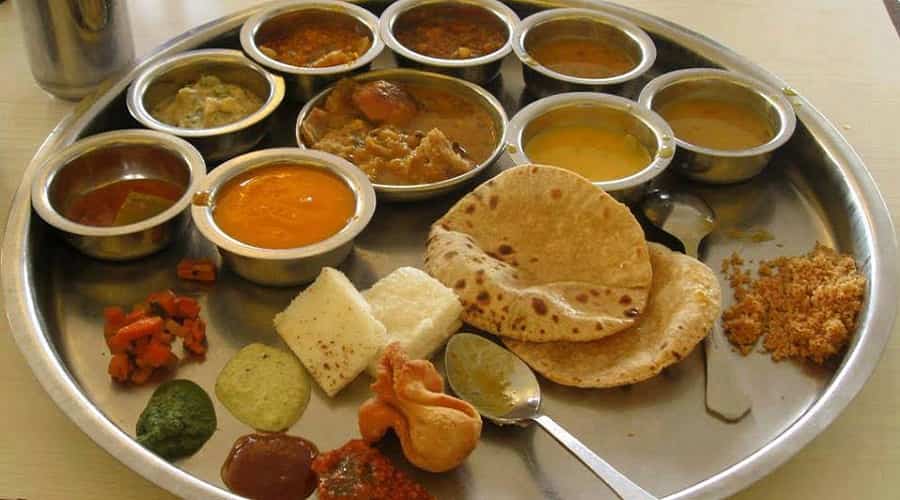
Most Gujaratis are vegetarians and consume a wide variety of lentils like Urad, Moong, Tuvar, Rajma, and mixed Daal. Some famous Daal preparations are Khadi and Dal Dhokli. They eat vegetable dishes like stuffed Karela, Methi Mutter, Okra, Tomato Sev, Cabbage Peas, Cauliflower Peas, Undhiyu, etc. Gujaratis tend to add a hint of sweetness to their food. They also enjoy a variety of snacks like Chana Dal Vada, Kutchi Dabeli, Dal Vada, Dhokla, Handvo, Kachori, Fafda, Chivda, Bhakarwadi, Jain Chivda, Sev Usal, Chavanu, and Patra.
Famous Gujarati sweets include Ghari, Kaju Katli, Barfi, Churmu, Khaja, Rabdi, Dudh/Moong Dal Halwa, Badam/Pista Chakki, Wheat Halwa, Mysore Pak, Puran Puri, Shrikhand, Mohanthal, Ladoo, Magas, and Chikki.
Fairs and Festivals
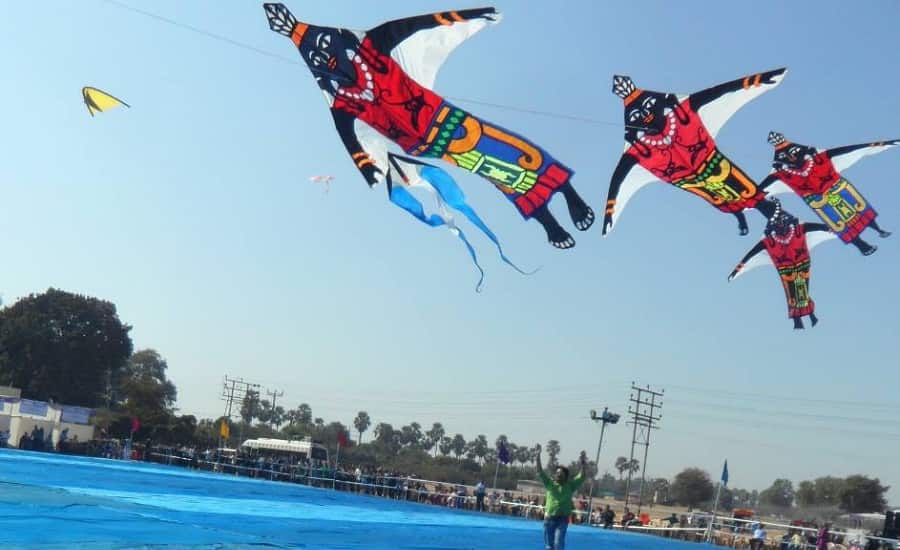
Gujarat is known as the land of fairs and festivals, and more than 1,000 festivals are celebrated here. Some famous fairs are Bhavnath Mahadev Mela (February), Dangs Darbar (July), Chitra Vichitra Mela (March), and the Dhrang Fair near Bhuj (April). The Trineteshwar Mahadev Fair near Rajkot happens in October, while the Vautha Mela takes place at the meeting point of the Sabarmati and Vatrak rivers in November. Other famous fairs include the Kutch Utsav, Sanskruti Kunj Fair, and Shamlaji Fair.
Festivals unique to Gujarat include the Makar Sankranti Kite Flying Festival in January, the Modhera Dance Festival in January, and the Kutch Mahotsav in Bhuj (February), which is a large crowd-puller. The Bhadra Purnima Fair is a unique night farmers’ festival.
Handicrafts
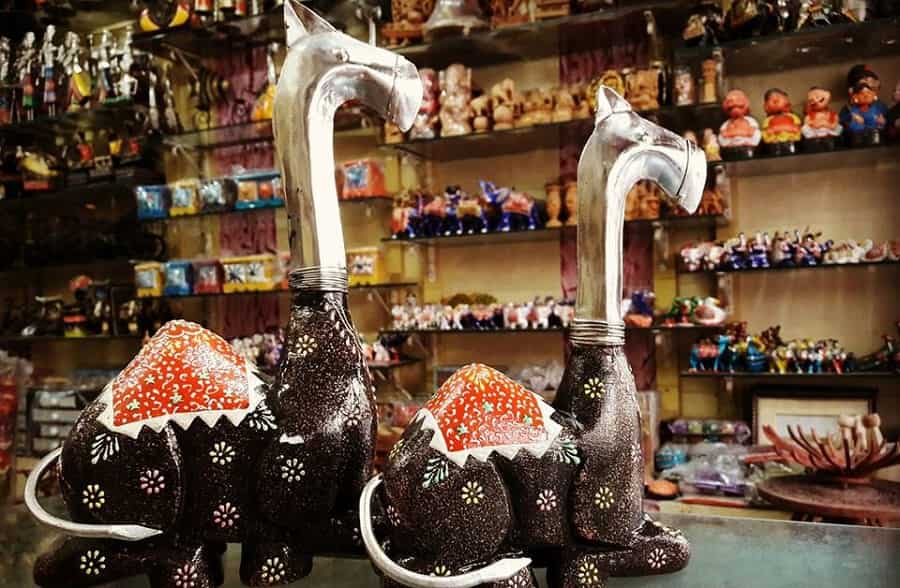
- Needlework from Gujarat is world-famous, with aari work, applique work, mirror embroidery (abhala), and Chakla embroidery being the most renowned styles. International exposure, widespread exports, and recognition in the fashion design community have been enjoyed by Gujarati needlework.
- Bandhani or tie-and-dye fabrics are very famous in Gujarat, and the Bandhej as well as the Jamdani style of Jamnagar, Bhuj, and Mandvi are the most famous. The colorful prints and embroidery-enhanced Gujarati Patola sarees are also very famous.
- Gujarat is also a silver jewelry hub, with Bhuj and Kutch being famous for their distinctive styles of jewelry.
- Gujarati beadwork is well-known, particularly in the regions of Khambhat and Saurashtra. The Kathi tribes produce amazing beadwork that is demonstrated on a variety of items, including Torans (decorative items hung over doorways).
- Quilting, Kalamkari, and embroidery are used in producing floor spreads (called Namdas) and Dhurries. These are important handicraft export items.
- Clay utensils, terracotta toys, and Gora Dev figures made by the Aravali and Chota Udaipur tribes of Gujarat are very famous. Mud wall paintings, fashioned into plaques and then decorated with mirrors, are another famous item.
- The Zari industry of Surat is one of the oldest handicraft traditions in Gujarat, dating back to the Mughal era. Surat is one of the biggest producers of Zari, and the Chalak, Katori, Kangari, and Tiki designs are used in sarees, turbans, blouse pieces, gharchola, and panetar (Gujarat wedding dresses).
